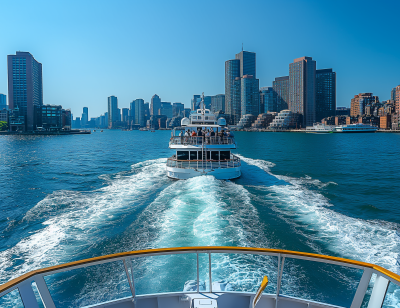Discover essential tips when planning a trip to Ireland. From ancient castles to lively cities, the best times to visit to budgeting and itinerary suggestions, Ireland beckons with its charm and allure!
Welcome to the land of lush landscapes and rich history! But first, did you know that Ireland is home to over 30,000 castles and castle ruins?
When planning a trip to Ireland, expect the promise of an adventure through charming villages, stunning coastlines, and lively cities. Whether you’re drawn to its ancient heritage or its vibrant culture, Ireland truly offers something for every traveler.
In this guide we’ll share with you the basics to get you started with a four-leaf clover on your Irish trip!
When to Go: Making the Most of Your Irish Adventure
This goes without saying, but choosing the best time to visit Ireland depends on your preferences for weather, crowds, and events. Take the summer months of June to August, for example. These months are ideal for pleasant weather, although they naturally attract the most tourists, as well.
For a more offseason experience, consider visiting during the shoulder seasons of late spring (April to May) or early autumn (September to October). Such months offer mild weather and fewer crowds. And you definitely wouldn’t want to miss the annual St. Patrick’s Day celebrations in March or the Galway International Arts Festival in July for some taste of the best Irish culture.
Counting Your Coins: Budgeting for Your Irish Getaway
It doesn’t have to take a leprechaun’s pot of gold when planning a trip to Ireland. It’s good to note, though, that your accommodation can vary widely. Fortunately, there are plenty of options ranging from budget hostels to luxury hotels.
A good ballpark average might see you spending around €50-€150 per night. Food can cost you around €10-€30 per meal, depending on where you eat. And while you’re at it, it’s smart to consider transportation costs, including car rentals and public transit, which typically can cost around €30-€60 per day.
Now to save money, you can consider staying in smaller towns, eating at local pubs, and taking advantage of free attractions like national parks and museums. This allows you to have more dough for hidden gems at the end of those proverbial rainbows!
Charting Your Course: Tailoring Your Trip to Your Preferences
There’s definitely a plethora of attractions and activities in Ireland. With that, it’s best to plan out your itinerary carefully to make the most out of your trip.
Start by listing must-see destinations like the Cliffs of Moher, the Ring of Kerry, and Dublin’s historical sites. For a short trip, focus on one region to minimize travel time.
Here are some suggested itineraries you can consider:
3-Day Trip: Explore Dublin’s highlights and take a day trip to the Wicklow Mountains.
5-Day Trip: Combine Dublin with a visit to Galway and the Cliffs of Moher.
7-Day Trip: Add a tour of the scenic Ring of Kerry and the historic town of Kilkenny.
By planning a trip to Ireland ahead and considering these tips, you’ll surely have a fulfilling and enjoyable journey through the Emerald Isle without breaking the bank.
Securing Your Spot: Tips for Booking Flights and Accommodations
When planning a trip to Ireland, finding the best deals for flights and accommodations is naturally crucial. Start by comparing prices and booking in advance so you can secure lower fares, especially during peak seasons.
For accommodations, consider several rentals such as budget-friendly hostels or charming bed and breakfasts to suit your budget and preferences. Don’t forget to look for package deals that bundle flights and hotels for added savings.
Travel insurance is another important aspect when planning a trip to Ireland. It will be a huge help for you against unforeseen circumstances like medical emergencies, trip cancellations, or lost luggage. Make sure to compare policies from reputable providers to find one that offers comprehensive coverage at a reasonable price.
Suitcase Savvy: What to Pack for Your Trip to Ireland
Likewise, packing for a trip to Ireland requires some careful consideration due to its unpredictable weather. Layering is key—bring a mix of lightweight and warm clothing. Waterproof gear is a must, including a good rain jacket and sturdy walking shoes. Ireland’s culture is generally casual and friendly, but if you plan to visit upscale restaurants or attend special events, pack a few smart-casual outfits.
Other essentials include an adapter for Irish power outlets, any necessary medications, and a small backpack for day trips. Don’t forget a travel guide or a downloaded map of Ireland to help you navigate your adventures. Oh, and it’s probably best to leave your England football jersey at home, while you’re at it.
The Adventure Continues: Looking Forward to Your Irish Journey
Planning a trip to Ireland can be an exciting and rewarding experience. With the right preparation, you’ll be ready to explore its stunning landscapes, rich history, and vibrant culture.
Have you been to Ireland? Share your tips and experiences in the comments below!
If not, visit This City Knows’Travel Resources for more detailed guides and exclusive tips to make your Irish trip truly one for the books!












